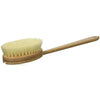Top 10 Harmful Cosmetic Ingredients to Avoid

Navigating the world of cosmetics can be overwhelming. Even for seasoned beauty product consumers, the avalanche of chemical names and industry jargon often makes ingredient lists a dizzying maze. To complicate matters further, controversial greenwashing practices (where brands deceptively market products as “natural” or “organic”) only blur the lines between genuinely safe choices and those that may carry hidden health risks.
That’s why we're here to demystify the process. This guide breaks down the harmful ingredients you should avoid in your cosmetics, explains why they’re problematic, outlines where they've been restricted, and shares natural alternatives that are just as effective—without the risk.
Because safe, effective cosmetic products shouldn’t be a luxury; they’re a basic right.
10 Cosmetic Ingredients You Should Avoid (and Safer Alternatives)
1. 1,4 Dioxane
What It Is: A chemical by-product resulting from a process called ethoxylation, which is used to make harsh petrochemicals less irritating.
Why Avoid It: Classified as a likely carcinogen by the U.S. Environmental Protection Agency, this toxic compound is also linked to cardiovascular damage, immune toxicity, and skin irritation.

Found In: Shampoo, body wash, liquid soap, and baby bath products.
Where Restricted: Canada.
How to Spot It: It won’t appear directly on labels, as it’s a contaminant rather than an ingredient. Watch out for terms like “sodium laureth sulfate,” “PEG compounds,” and anything containing “-xynol,” “ceteareth,” or “oleth.”
Natural Alternatives: Look for certified organic products or those with naturally derived foaming agents.
2. DEA, TEA, MEA (Diethanolamine, Triethanolamine, Monoethanolamine)
What They Are: Ammonia compounds used primarily as emulsifiers and foaming agents in cosmetics.
Why Avoid Them: These chemicals can form carcinogenic compounds when mixed with nitrosamines, posing risks such as organ toxicity, neurological damage, and skin irritation.
Found In: Makeup, sunscreen, shampoo, and hair dye.
Where Restricted: European Union.
How to Spot Them: Look for terms like “cocamide DEA,” “lauramide DEA,” and “TEA lauryl sulfate.”
Natural Alternatives: Use plant-derived emulsifiers like beeswax and lecithin, or natural surfactants like Castile soap.
3. Dimethicone
What It Is: A silicone-based ingredient used to give hair and skin a smooth, silky feel.
Why Avoid It: While it may make your skin feel soft temporarily, dimethicone blocks pores, preventing moisture balance and leading to acne or irritation.
Found In: Serums, moisturizers, sunscreens, and hair conditioners.
How to Spot It: Listed as “dimethicone,” “cyclomethicone,” or “dimethicone copolyol.”
Natural Alternatives: Use plant-based moisturizers like shea butter and jojoba oil.
4. Formaldehyde and Formaldehyde Releasers
What It Is: A carcinogenic compound released by certain synthetic preservatives, such as urea.
Why Avoid It: It can cause long-term health issues, including neurotoxicity and respiratory problems, and is particularly dangerous when inhaled.
Found In: Nail polish, hair straighteners, and shampoo.
Where Restricted: European Union, Japan, Canada, and Sweden.
How to Spot It: Look for “formaldehyde,” “formalin,” “quaternium-15,” or “sodium hydroxymethylglycinate” on labels.
Natural Alternatives: Look for products preserved with vitamin E, grapefruit seed extract, or essential oils like tea tree.
5. Heavy Metals (Lead, Arsenic, Mercury, and More)

What They Are: Often used as colorants or whitening agents, heavy metals accumulate in the body over time, leading to hormone disruption and an increased risk of cancer.
Why Avoid Them: These substances may negatively impact reproductive health, the immune system, and hormone regulation.
Found In: Lipstick, eyeliner, foundations, and whitening toothpaste.
Where Restricted: Banned in Canada, Japan, and the EU.
How to Spot Them: Terms like “aluminum flake” or “lead acetate” are red flags. Heavy metals in trace amounts may not be listed, so it’s critical to choose products from trusted natural brands.
Natural Alternatives: Non-nano mineral sunscreens and clean beauty brands with transparent sourcing practices.
6. Methylisothiazolinone (MIT)
What It Is: A preservative used to extend the shelf life of water-based products.
Why Avoid It: Linked to neurotoxicity, MIT can also trigger allergic reactions and may affect fetal development during pregnancy.
Found In: Sunscreens, body washes, and facial cleansers.
Where Restricted: European Union.
How to Spot It: Look for lengthy names such as “methylisothiazolinone” or “2-methyl-3(2H)-isothiazolone.”
Natural Alternatives: Opt for vitamin E or grapefruit seed extract as natural preservative solutions.
7. Parabens
What They Are: Widely used preservatives found in a large percentage of cosmetics.
Why Avoid Them: Parabens mimic estrogen in the body and are linked to breast cancer, impaired fertility, and developmental issues.
Found In: Hair care, lotions, and sunscreen.
Where Restricted: Certain parabens are banned in Denmark for children’s products.
How to Spot Them: Anything ending in “-paraben,” such as methylparaben or butylparaben.
Natural Alternatives: Prolong shelf life naturally with antioxidants or essential oils.
8. Petroleum Derivatives
What They Are: Petroleum jelly and mineral oil are commonly used emollients.
Why Avoid Them: Often contaminated with cancer-causing compounds, they can clog pores and exacerbate skin conditions.
Found In: Skincare, lip balms, and makeup.
Where Restricted: Stringent refining rules are in place in the EU.
How to Spot Them: Listed as “petrolatum” or “paraffin wax.”
Natural Alternatives: Choose natural emollients like cocoa butter or mango butter.
9. Phthalates
What They Are: Chemical plasticizers that improve product flexibility and fragrance longevity.
Why Avoid Them: These endocrine disruptors can damage fertility and may even harm fetal development.
Found In: Hair sprays, perfumes, and nail polish.
Where Restricted: DBP and DEHP phthalates are banned in the EU.
How to Spot Them: Names like “diethyl phthalate” or the ambiguous term “fragrance” can indicate phthalates.
Natural Alternatives: Choose products with plant-based fragrances or essential oils.
Final Thoughts
Your skin is your largest organ, and what you put on it matters. Knowledge is the first step in shifting away from potentially harmful cosmetics and toward healthier alternatives. When choosing products, consider brands that prioritize transparency and use non-toxic, non-GMOP, organic and plant-based ingredients.
Want to explore clean beauty brands that align with these values? Look for certifications like Organic Certifiers, USDA Organic or NPA certified.
Protect your health and the planet—one ingredient at a time.

September 15, 2025
Uric Acid Reduction Supplements: How Tart Cherry Capsules Work Naturally
Are you struggling to manage your uric acid levels naturally? Uric acid reduction supplements have gained attention for their ability to support this goal, particularly tart cherry capsules. These supplements harness the antioxidant and ...
Read more
September 15, 2025
Exploring the Potential Health Risks of Bacillus Subtilis Probiotic Strains and Why We Chose to Exclude It
Probiotics have become a cornerstone of many people’s health routines, offering an array of benefits for digestive health, immunity, and overall well-being. Among the most problematic of the popular probiotic strains is Bacillus subti...
Read more
September 15, 2025
The Complete Mineral Guide: How to Identify Mineral Deficiencies and Boost Vitality
In today’s world, you’ve probably heard about the importance of minerals for our health. In this article, we’ll explore which minerals are essential, how much we need, and how modern diets differ from what our ancestors ate due to chan...
Read more




Leave a comment